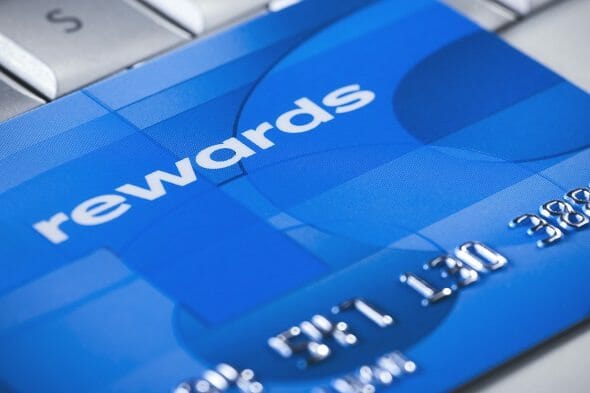Editorial Note: This content is not provided by the credit card issuer. Any opinions, analyses, reviews or recommendations expressed in this article are those of the author’s alone, and have not been reviewed, approved or otherwise endorsed by the issuer.
Credit card companies typically offer a plethora of rewards options for their cardholders to take advantage of. But cash back has long been a favorite of many, as it gives you the chance to earn cold, hard money for making everyday purchases. If you’re confused about how cash back works, read on for a full explanation.
How Cash Back Works
At its core, cash back refers to a predetermined percentage of a purchase you make being returned to you as cash rewards. Cash back rates typically range between 1% and 5%, though there are some outliers to be mindful of. Credit card issuers will usually clearly label what types of purchases earn what level of cash back. But like anything in the credit card industry, you must read the fine print.
This is mainly because all purchases and cash back rewards are governed by merchant category codes, or MCCs. Credit card companies ultimately determine these designations, with Mastercard, Visa, American Express and Discover calling the shots. Some common codes are “restaurant,” “department store,” “airline” and “entertainment,” among others. So if you earn 5% bonus cash back at restaurants and you go to Burger King — which has a restaurant MCC — you’ll get that 5% back.
But what these limiting MCCs sometimes don’t take into account are businesses that could fit into more than one category. Included in this group are hotels, superstores like Walmart, tourist attractions like museums and other multi-faceted establishments. In turn, you could lose out on cash back if you’re confused about which category a purchase you made falls into.
As an example, let’s say your family orders room service while on vacation in The Bahamas. You pay with your credit card thinking you’ll get the advertised 3% cash back on dining. When your credit card statement comes in the mail, however, you’ve only received the base 1% earnings. This is because the MCC of your hotel is just that, a hotel, which leaves your credit card issuer blind to what you really bought.
Unfortunately situations like these often offer very little recourse, as your card’s issuer has no ability to change these codes. In fact, only the major credit companies can change their own code selections.
New cardholders will often receive cash back promotions and bonuses. These offers can either be recurring — monthly, quarterly, yearly, etc. — or simply for just one period of time, usually at the beginning of your account’s life. Hypothetically, a recurring bonus might look like this: “Earn 3% cash back at supermarkets and wholesale clubs, up to $1,500 in purchases each quarter.” On the other hand, a one-time promotion might allow for 5% cash back on airfare purchases made during the first three months you’re a cardholder.
Depending on your card, cash back may be capped or it could expire after a period of time. While some cards feature both an earnings limit and expiration dates, others may have no restrictions. All cash back cards have their own, unique system surrounding them. So it’s important to refer to your documentation whenever you have a particular question.
Using Your Cash Back Earnings

The vast majority of cash back credit cards offer variations of the same choices for redeeming rewards. Most often, you’ll see statement credits, checks, bank account deposits, gift cards and charitable donations available to you.
- Statement credit – Instead of receiving your cash back in-hand, you can apply it to your upcoming monthly bill, saving you money in the process.
- Check – As one of the more direct ways of redeeming cash back, checks allow you to basically do whatever you want with its value.
- Bank deposits – Eligible accounts usually include checking accounts, savings accounts or investment accounts.
- Gift cards – With this option, you can convert cash back into retail credit at a store or website at which you want to shop.
- Donations – Many card issuers have open relations with charities. These partnerships open the door for you to aid your favorite causes with real money.
It’s by far the easiest to redeem cash back through your card issuer’s website that it provides. Here you’ll not only see your rewards status, you will also know every possible redemption you could make. If you’d rather talk to a real person, most companies still have rewards phone lines you can call, as well.
Those who’d rather not have to worry about where their rewards currently stand will find that a redemption threshold might be helpful. Not all cards offer this feature. But if yours does, set a threshold at which your cash back is automatically redeemed in any manner you desire. Additionally, some cards require you to attain a certain amount of cash back before redeeming is possible.
Cash Back With Each Major Credit Card Company

There are tons of different cash back cards, depending on your credit score you may be eligible for some but not others. While it’s impossible to give universal specifics for each credit card company, below we’ve provided overviews of some of the most popular cash back cards.
Citi Double Cash Card (Mastercard)
Cash Back Rate: 1% at the time of purchase, 1% when you pay them off
Limit or Expiration: No limit; Expires if no eligible purchases are made for 12 months
Redemption Options: As a check, statement credit or gift card
The “double cash” nature of the Citi Double Cash Card means you effectively earn cash back twice: first when you make the initial purchase and again when you pay your credit card bill. The 12-month expiration is fairly standard and the lack of limits on how much cash back you can earn is generous. Statement credits, checks and gift cards are three of the most common redemption choices, so it’s no surprise to see them offered here.
Bank of America® Cash Rewards credit card (Mastercard)
Cash Back Rate: 3% in the category of your choice, 2% on purchases at grocery stores and wholesale clubs, 1% on other purchases
Limit or Expiration: Cash back on choice category, grocery stores and wholesale club purchases is limited on up to $2,500 in combined purchases each quarter; No expiration dates
Redemption Options: Once you have $25 or more, you can redeem as a statement credit, a check or a deposit to an eligible Bank of America® or Merrill Lynch® account
Take note of the combined $2,500 quarterly limit on 3% and 2% cash back in category of choice and at grocery stores and wholesale clubs, respectively. The Bank of America® Cash Rewards credit card also requires cardholders to have a minimum of $25 in earned cash back before they can redeem.
Blue Cash Everyday American Express Card (American Express)
Cash Back Rate: 3% on U.S. supermarket purchases, 2% on U.S. gas stations and select U.S. department store purchases, 1% on other purchases
Limit or Expiration: 3% rate at U.S. supermarkets is limited to $6,000 a year in purchases then drops to 1%; No expiration dates
Redemption Options: After earning at least $25, redeem as a statement credit in $25 increments; Gift cards and merchandise redemptions from time to time
Amex offers some of the strongest rewards cards around, and the Blue Cash Everyday American Express Card is no exception. It does come with some limits; namely the 3% cash back rate on U.S. grocery store purchases is capped at $6,000 in purchases a year. At that time, cardholders earn 1% in cash back on groceries.
Discover it® Card (Discover)
Cash Back Rate: 5% in rotating categories like gas station, supermarket, restaurant, Amazon.com and wholesale club purchases, 1% on other purchases; Full cash back match at the end of your first year
Limit or Expiration: $1,500 cap on purchases that earn the 5% rate each quarter; No expiration dates
Redemption Options: Statement credits, deposits to a bank account, gift cards and eCertificates, pay with cash back at select merchants and charitable donations
Discover cards offer great first-year cash back matches and distinctive cash back categories. These traits are on full display with the Discover it® Card. This includes 5% cash back on purchases ranging from dining to Amazon.com. However, there are limits for this rate and you have to opt in to categories each quarter to qualify. This card also offers five redemption options — the most on this list.
Tips to Maximize Cash Back Potential and Minimize Credit Risk
- Cash back is one of the most prolific perks that the modern credit card market has to offer. But it’s important that you don’t overspend outside of your means just for the sake of rewards. Because many cash back cards come with higher annual percentage rates (APRs), this could force you into large, unsustainable interest payments.
- Whenever possible, swipe your card for purchases in bonus categories. Not all cards have these to offer, but most do. So make sure you know which cards in your wallet offer bonuses at places like gas stations and supermarkets.
- Know what types of redemptions — statement credits, bank account deposits, gift cards etc. — work best for you. This will drastically narrow down your card options, making the decision process much simpler.
Photo Credit: ©iStock.com/4×6, ©iStock.com/Pgiam, ©iStock.com/Ridofranz
Editorial Note: This content is not provided by the credit card issuer. Any opinions, analyses, reviews or recommendations expressed in this article are those of the author’s alone, and have not been reviewed, approved or otherwise endorsed by the issuer.
Advertiser Disclosure: The card offers that appear on this site are from companies from which SmartAsset.com receives compensation. This compensation may impact how and where products appear on this site (including, for example, the order in which they appear). SmartAsset.com does not include all card companies or all card offers available in the marketplace.
